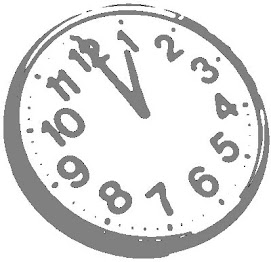Shiftwork schedules are also demanding and likely to produce stress and fatigue. Shiftwork can affect safety, health, or ability to do the job. Some of these things happen very soon after starting shiftwork. We talk about these under Immediate Effects. Health changes take a longer time to appear. We talk about health under Long-Term Health Effects.
Immediate Effects
Sleep
Soon after starting shiftwork, people notice changes in their sleep. Night workers usually get the least amount of sleep. Evening shift-workers get the most sleep, and day shiftworkers get a medium amount of sleep. Night workers are forced to sleep during the day, when their circadian rhythm makes them feel more awake. Day sleep is usually shorter than night sleep—sometimes two or three hours shorter. Day sleep also is lighter than night sleep.
Day sleepers often say they don't sleep as deeply as they do at night. Because their sleep is lighter, they are easily awakened by sounds. This makes sleeping difficult. Since there is more activity during the day, there are more sounds to wake up the sleeping shiftworker. Both permanent night workers and rotating shiftworkers sleep worse when working nights. However, rotating shiftworkers sleep the least of all.
Sleep loss makes it much easier to fall asleep at inappropriate times. This affects a worker's ability to perform safely and efficiently. Sleepiness can affect performance both on and off the job. Driving to and from work is a major concern. Sleepiness affects our ability to concentrate or pay attention, and driving requires us to pay attention at all times.
So, if a person is sleepy, it is easier to have an accident. Several jobs, such as operating dangerous machinery, also require us to pay attention at all times. So sleepiness can be risky in many different occupations. This risk is not simply a matter of falling completely asleep. After sleep loss, it is possible to have very brief periods of sleep that last only a few seconds.
Most people may not even realize these short sleeps are happening. During those few seconds of sleep, they are not paying attention at all. If something dangerous happens at those times, the worker or somebody else could get seriously hurt.
Circadian Rhythm, Performance, and Safety
The circadian rhythm is a major body rhythm with regular ups and downs in the 24-hour day. Many systems in the body are very active at certain times of day, and not active at all at other times of day. Usually the most activity happens in late afternoon or early evening. For example, the body's ability to produce energy from food (metabolism) is highest in the afternoon to evening. The least activity usually happens in the middle of the night when most people are asleep. This is one reason people feel most active and alert around 4 to 6 o'clock in the afternoon, and sleepiest at 4 to 6 o'clock in the morning.
There also are personal differences in circadian rhythms. Some people are morning types or “larks.” Morning people feel most active and alert early in the day. They usually go to bed early in the evening. Other people are evening types or “owls.”
Evening people feel most active in late afternoon or evening, and like to stay up late into the night. Fishermen who are out on the water before dawn usually are morning types. Musicians who perform in the evening usually are evening types. Most people, however, are somewhere in-between the strict morning and evening types.
The internal circadian rhythm affects how alert people feel. This affects their ability to perform. People perform best when alertness and internal body activity is high, and worst when alertness and activity are low. In the normal day-work, night-sleep situation, people work when the circadian rhythm is high and sleep when it is low.
On average, this schedule is best for performance, which means it also is best for safety. When workers perform poorly, they are more likely to make errors that could lead to accidents or injuries.
When working the night shift, a person is at work when his or her circadian rhythm is low and asleep when it is high. Such a schedule means that a person is trying to stay alert when the circadian rhythm is low.
On average, this is not the best time of day for performance. This low-point affects physical activity and the ability to concentrate. If a worker also has lost sleep, fatigue could combine with the circadian low-point to double the effect on one's ability to perform. Poor performance could affect both productivity and safety. Studies of errors and accidents at different times of day show an increased risk at night when the circadian rhythm is low and sleep has been lost.
Source: Plain Language About Shiftwork (NIOSH)
Continued in:* Shiftworker health and safety: short-term effects, part II









No comments:
Post a Comment